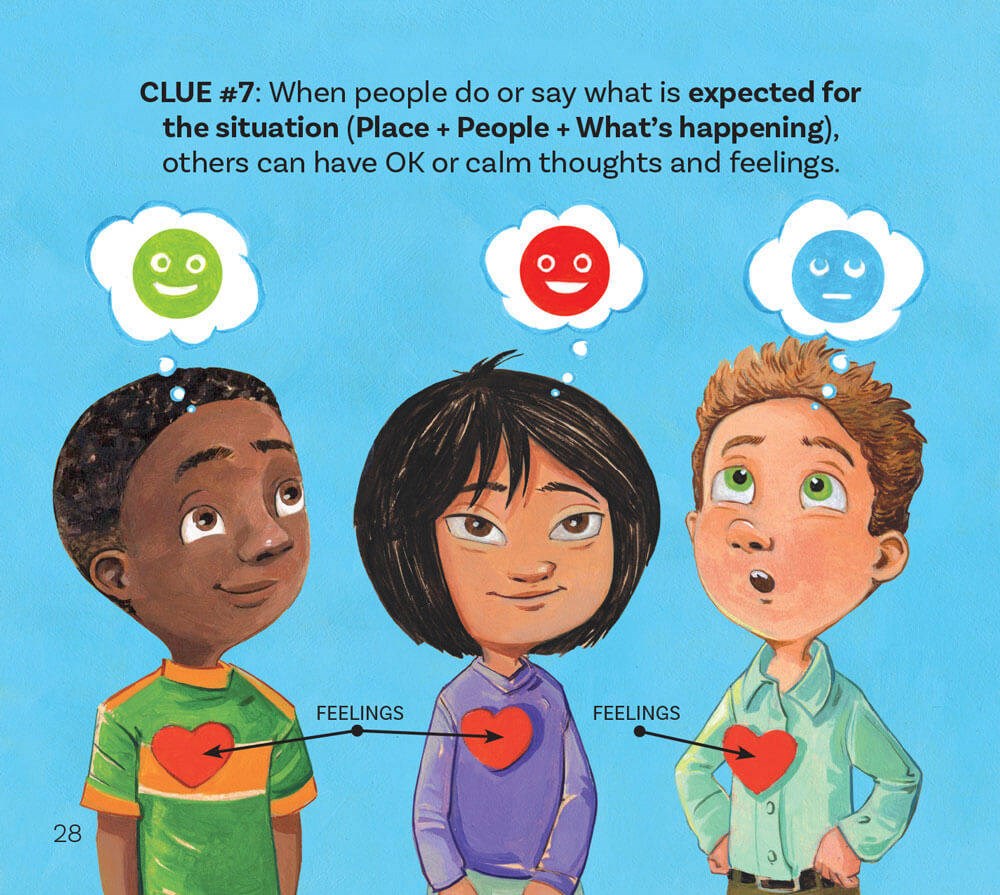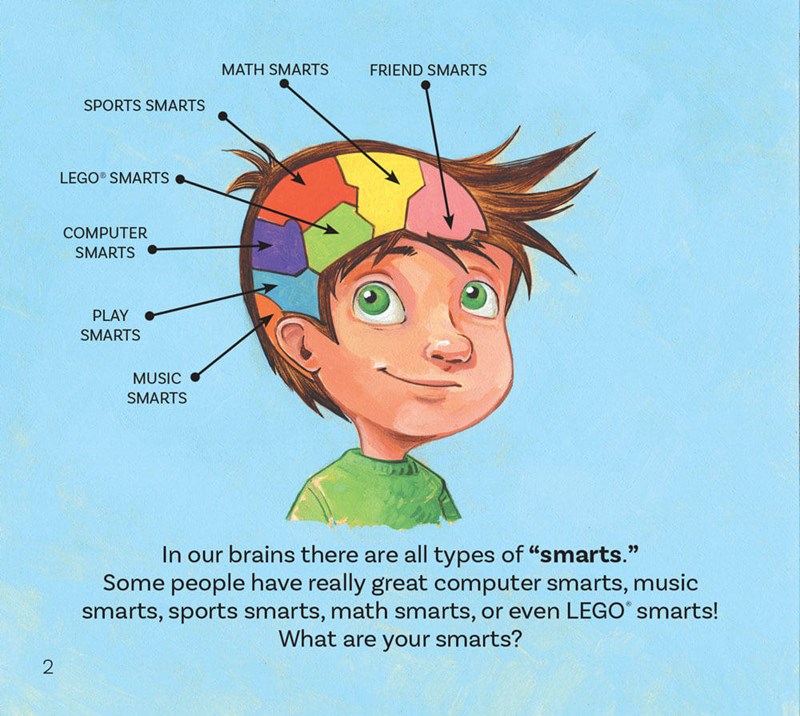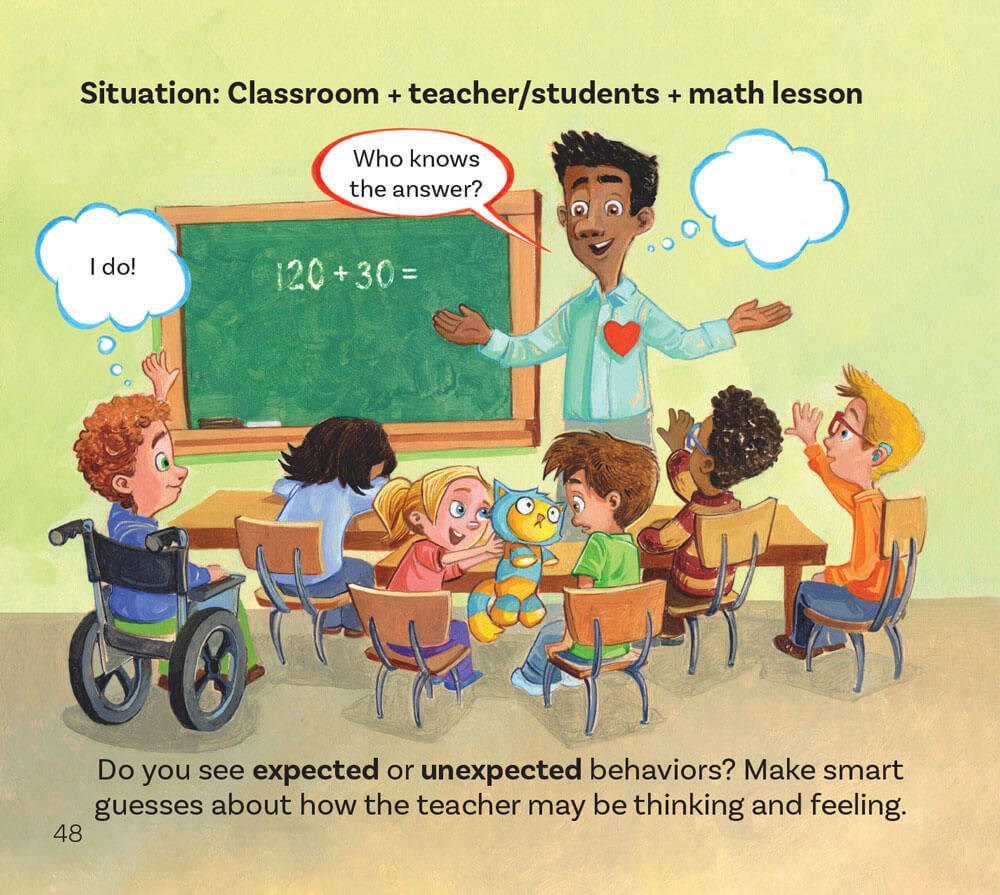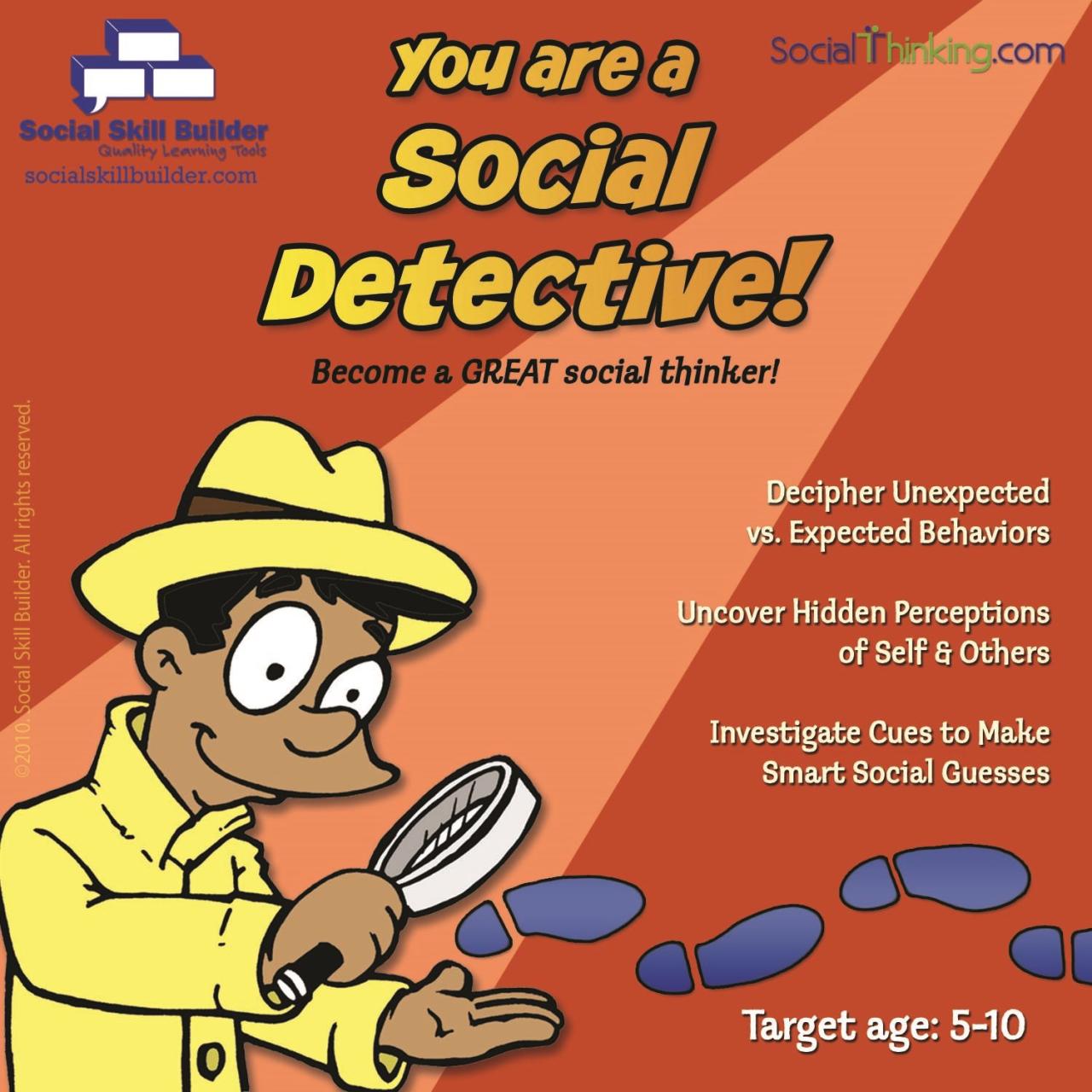You are a social detective – Step into the fascinating world of social detective work, where you are a master of observation and analysis, uncovering the hidden truths that lie beneath the surface of human interactions. As a social detective, you possess the skills to decipher body language, analyze communication patterns, and map social networks, revealing the motivations, intentions, and connections that shape our lives.
Join us on this captivating journey as we delve into the art of social detection, empowering you with the tools to understand the complexities of human behavior and navigate the intricate web of social dynamics.
Social Media Footprint Analysis
Social media footprint analysis involves examining individuals’ social media profiles to uncover patterns, connections, and areas of interest. This analysis can reveal insights into their personal preferences, habits, and social circles.
Methods for Analyzing Social Media Profiles
Analyzing social media profiles entails:
- Examining the profile information, such as name, location, occupation, and interests.
- Reviewing posts, comments, and interactions to identify patterns and topics of interest.
- Assessing the frequency and timing of posts to understand posting habits and engagement levels.
- Exploring the network of connections, including friends, followers, and groups, to identify potential relationships and social circles.
Inferring Personal Preferences, Habits, and Social Circles
Social media data can provide valuable insights into individuals’ personal preferences, habits, and social circles:
-
-*Personal Preferences
Posts and interactions can reveal interests in specific topics, hobbies, or entertainment options.
-*Habits
Posting patterns can indicate daily routines, sleep schedules, or travel habits.
-*Social Circles
Connections and interactions with others on social media can provide information about social circles, professional networks, and family relationships.
Ethical Considerations and Privacy Concerns
Social media footprint analysis raises ethical and privacy concerns:
-
-*Consent
Obtaining consent from individuals before analyzing their social media profiles is crucial.
-*Data Privacy
Ensuring the security and confidentiality of personal data collected from social media platforms is essential.
-*Bias
Social media data may reflect only a portion of an individual’s life and may be biased towards certain aspects.
Behavioral Observation Techniques

Behavioral observation techniques involve observing and interpreting nonverbal cues, body language, and facial expressions in social interactions. These cues can reveal hidden emotions, motivations, and intentions.
Nonverbal Cues, You are a social detective
Nonverbal cues include gestures, eye contact, posture, and proxemics (personal space).
- Gestures: Hand movements, shrugs, and head nods can convey emotions, intentions, and cultural norms.
- Eye contact: Prolonged eye contact can indicate interest, intimacy, or aggression, while avoiding eye contact can suggest shyness, guilt, or deception.
- Posture: Upright posture with open arms can indicate confidence, while slouching or crossed arms can suggest defensiveness or insecurity.
- Proxemics: The distance between individuals in a conversation can indicate the level of intimacy or power.
Body Language
Body language refers to the overall physical movements and posture of an individual.
- Facial expressions: Smiles, frowns, and raised eyebrows can convey a range of emotions.
- Mirroring: Mimicking another person’s body language can indicate rapport or empathy.
- Nervous habits: Fidgeting, nail-biting, or pacing can indicate anxiety or stress.
- Defensive postures: Crossing arms or legs, or turning away from someone, can indicate a lack of interest or a desire to protect oneself.
Context and Cultural Factors
It’s crucial to consider context and cultural factors when interpreting behavioral cues. What may be considered appropriate behavior in one culture may be inappropriate in another.
As a social detective, I’m always on the lookout for patterns and connections. I recently stumbled upon an interesting concept called “transpose rx minus to plus.” Check it out here: transpose rx minus to plus . It’s a fascinating approach to reframing negative experiences into positive ones.
As a social detective, I can see how this could be a powerful tool for understanding and navigating social interactions.
- Context: The setting and purpose of the interaction can influence the meaning of nonverbal cues.
- Culture: Cultural norms and values shape how people express themselves nonverbally.
Communication Analysis: You Are A Social Detective

Communication analysis involves examining verbal and non-verbal cues to understand the speaker’s personality, intentions, and relationships. Verbal communication, which includes tone of voice, word choice, and conversational patterns, can provide valuable insights.
Tone of Voice
Tone of voice conveys emotions and attitudes. A high-pitched, excited tone may indicate enthusiasm, while a low-pitched, monotonous tone may suggest boredom or disinterest. Changes in tone can also signal shifts in mood or deception.
Word Choice
The words a person uses can reveal their personality traits and social status. For example, people who use abstract language may be more intelligent, while those who use concrete language may be more down-to-earth. Word choice can also indicate relationship dynamics, such as the use of “we” to convey closeness or “I” to assert independence.
Conversational Patterns
Conversational patterns, such as turn-taking, interruptions, and topic changes, can indicate personality traits and power dynamics. For example, people who interrupt frequently may be more assertive, while those who wait their turn may be more passive. Changes in conversational patterns can also signal deception or discomfort.
Active Listening and Empathy
Active listening involves paying full attention to the speaker, both verbally and non-verbally. It involves asking clarifying questions, paraphrasing, and summarizing to ensure understanding. Empathy involves understanding and sharing the speaker’s emotions. These skills are essential for effective communication analysis as they help the listener to accurately interpret the speaker’s message.
Network Mapping and Analysis

Network mapping and analysis involves understanding the structure and dynamics of social networks by identifying key individuals, groups, and connections. It helps uncover hidden patterns, influential nodes, and potential bridges between different groups within a network.
Steps in Network Mapping and Analysis
- Data Collection:Gather data from social media platforms, online forums, and other sources to create a network graph.
- Network Visualization:Use visualization tools like Gephi or NodeXL to create visual representations of the network, highlighting nodes (individuals) and edges (connections).
- Node Analysis:Identify influential individuals based on metrics like degree centrality (number of connections), betweenness centrality (ability to bridge different groups), and closeness centrality (proximity to other nodes).
- Community Detection:Use algorithms to identify clusters or communities within the network, based on shared interests, affiliations, or communication patterns.
- Edge Analysis:Examine the strength and direction of connections between nodes, identifying potential bridges or bottlenecks in information flow.
Applications of Network Analysis
Network analysis has various applications in social media research, including:
- Identifying Influencers:By analyzing node centrality, researchers can identify individuals who have a high impact on the network, potentially influencing opinions and behaviors.
- Detecting Communities:Network analysis helps identify groups of individuals who share similar interests or affiliations, providing insights into subcultures and niche communities.
- Mapping Information Flow:By analyzing edge strength and direction, researchers can track the flow of information through the network, understanding how ideas and trends spread.
- Predicting Behavior:Network analysis can help predict individual behavior based on their connections and the behavior of their peers within the network.
Case Studies and Real-World Applications

Social detective skills have found practical applications in various fields, including law enforcement, market research, and conflict resolution. These skills enable individuals to gather and analyze information from social media platforms to gain insights into individuals or groups.
Law Enforcement
Social media has become a valuable tool for law enforcement agencies. By analyzing social media profiles, investigators can identify suspects, track down witnesses, and gather evidence. For instance, in a missing person’s case, social media posts can provide clues about the person’s last known location or interactions with others.
However, challenges arise when dealing with privacy concerns and the potential for false information on social media. Investigators must adhere to ethical guidelines and legal requirements when collecting and using social media data.
Market Research
Social media analysis is a powerful tool for market researchers. By analyzing consumer behavior and preferences on social media platforms, companies can gain valuable insights into their target audience. This information can inform product development, marketing campaigns, and customer service strategies.
One challenge in market research is the need for specialized tools and expertise to effectively collect and analyze large amounts of social media data. Additionally, researchers must be mindful of the privacy implications of using social media data for commercial purposes.
Conflict Resolution
Social detective skills can also be applied in conflict resolution settings. By analyzing social media interactions between disputing parties, mediators can identify underlying issues and facilitate communication. This can help resolve conflicts peacefully and effectively.
One challenge in conflict resolution is the potential for social media to escalate tensions. Mediators must be skilled in navigating social media platforms and using them as a tool for constructive dialogue rather than further conflict.
User Queries
What are the key skills of a social detective?
Observation, analysis, communication analysis, network mapping, and ethical considerations.
How can social detective skills be used in real-world scenarios?
Law enforcement, market research, conflict resolution, and relationship analysis.
What are the ethical considerations in social detective work?
Respect for privacy, informed consent, and avoiding harm to individuals.